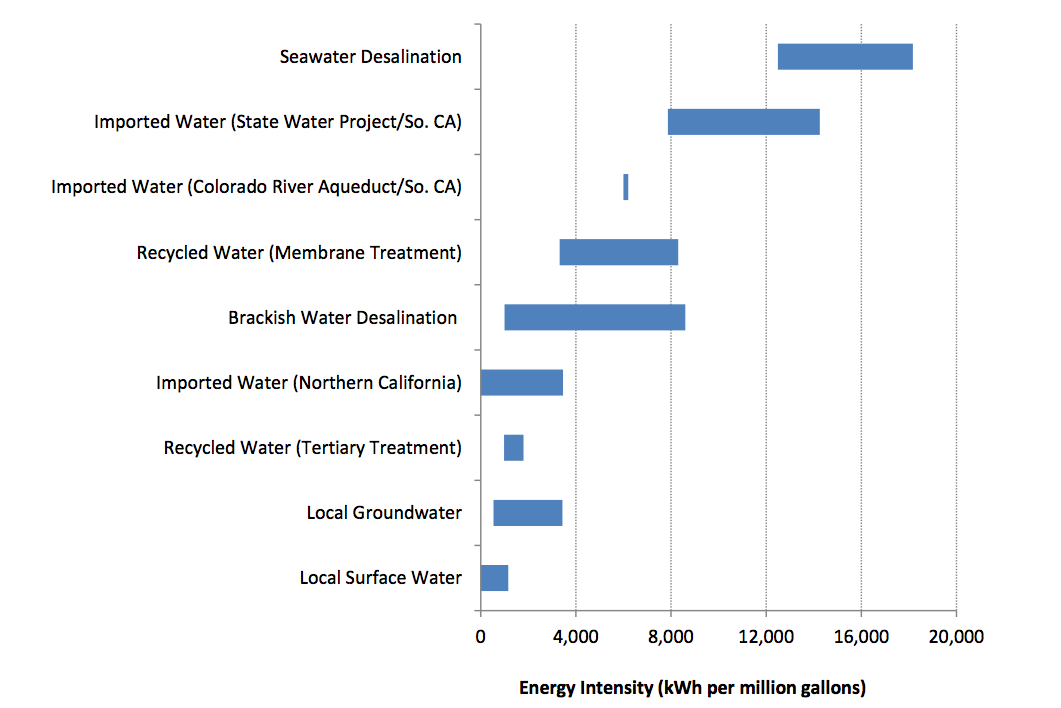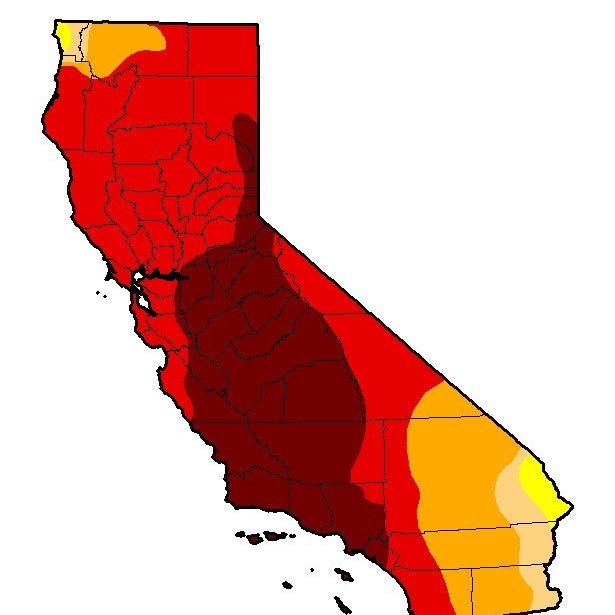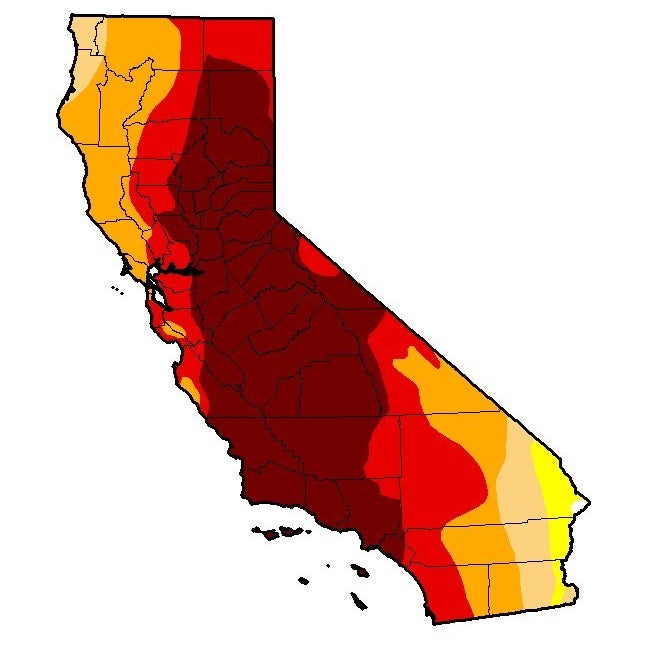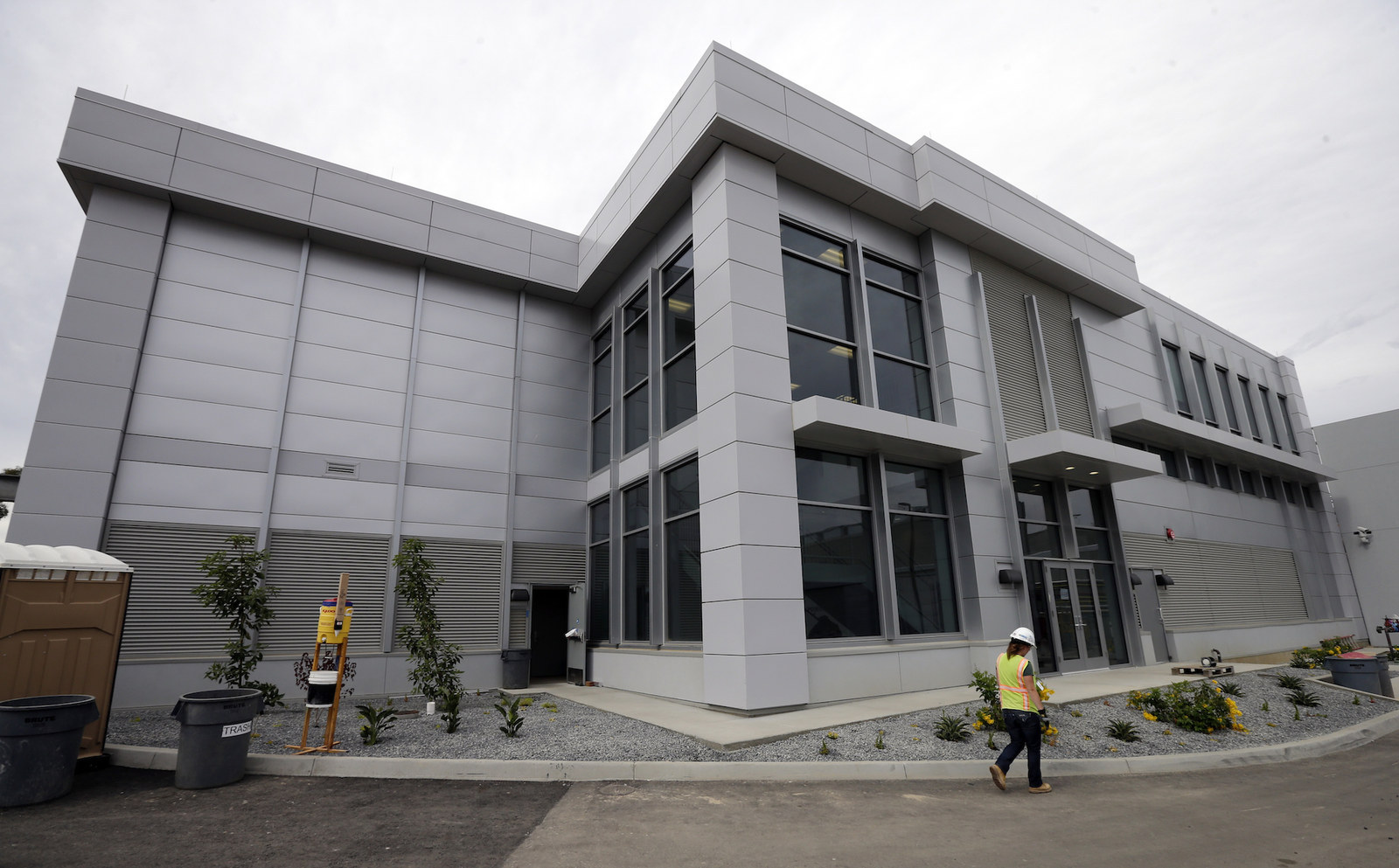
The story of Southern California is, famously, one about water. And this week, a new chapter in that story began with the opening of a massive plant in San Diego County that will pull water from the ocean, remove the salt, and pipe it into homes.
The Carlsbad Desalination Plant — the largest in the Western Hemisphere — will make 50 million gallons of water a day, or more than 18 billion gallons per year. It comes after four years of brutal drought that have tested California's ability to keep sending water from the mountainous north to the populous south, and is designed to make the San Diego community more self-reliant. And among many Californians, desalination is popular, an obvious and long-awaited solution to years of water shortages.
But — like much of California's history with water — the story is complicated. Even as the plant begins operations, critics have slammed it for having extraordinarily high energy requirements, and therefore a large carbon footprint. Environmentalists have said desalination kills marine life, while others say that it simply doesn't make economic sense.
Desalination consequently represents a hard choice in a state that, with lingering drought and a growing population, likely faces a future of hard choices.
How it works:

The Carlsbad Desalination Plant works through a process called reverse osmosis. The plant pulls water directly from the adjacent ocean, then applies massive pressure to force it through what is basically a membrane with tiny holes. The holes are big enough to let water molecules pass through, but not big enough for salt.
The plant should provide between 7% and 10% of the overall water supply to San Diego County. The county gets much of its remaining water from the Metropolitan Water District — a Los Angeles-based water wholesaler — as well as from the Colorado River and an area irrigation district.
"The whole point of developing a supply like the Carlsbad project is to continue something that we started back in the 1990s in San Diego County, which was when we wanted to move to a more diversified water supply portfolio," Bob Yamada, Director of Water Resources for the San Diego County Water Authority, told BuzzFeed News.
Desalination has a major carbon footprint, as well as other environmental costs.

One of the biggest criticisms of the project is that the plant will generate massive carbon emissions. Jonas Minton, who works with the Planning and Conservation League and previously served as deputy director of the California Department of Water Resources, told BuzzFeed News that desalination uses "more energy than any other possible source of water on earth."
The problem, Minton explained, is that it takes a tremendous amount of energy to force water through the membrane that removes salt. While the energy could theoretically come from anywhere, much of it right now is coming from sources that burn carbon, Minton said.
"We're going to fight this plant to the end of the earth."
According to the San Diego County Water Authority (SDCWA), the plant and an associated pump station will use 296,088 megawatt hours per year — enough electricity to power nearly 27,000 American homes.
Yamada said that right now about a third of the energy used for the plant comes from renewable sources. He also said the project will be fitted with solar panels, and the company that built the plant, Poseidon Water, is paying for carbon offsets. Documents produced by SDCWA further state that "Poseidon's Climate Action Plan calls for the plant to be net carbon neutral over 30 years by offsetting greenhouse gas emissions from project operations."
Poseidon did not respond to BuzzFeed News' request for comment.
The project should also eliminate the need to use energy to transport water from Northern California, Yamada added, which is currently a major source of emissions in the state.
But not everyone is convinced. Marco Gonzalez, an attorney for Coast Law Group who has represented a number of organizations that oppose the plant, cited the plant's energy requirements and carbon footprint as one of several reasons it has generated significant opposition among environmental activists.
"We're going to fight this plant to the end of the earth," he added.



U.S. Drought Monitor shows the increasing severity of the drought in California over the last 3 years.
Gonzalez argued that producing water locally won't reduce the amount of electricity the state uses to transport water; rather that water will still be sent south, but will just end up in a different community. The result is a net increase in emissions.
Yamada acknowledged that the plant does increase emissions, but said the tradeoff was greater reliability for the water supply.
Gonzalez and Minton also both said the facility destroys sea life that gets pulled into its intake system.
"Mortality is 100%," Minton said.
The impact on the surrounding ocean ecosystem is further complicated, according to Gonzalez, by the plant discharging brine — or very salty water that is a byproduct of the desalination process — which erodes reefs.
Still, Yamada countered that the plant went through a series of environmental impact studies and approvals with multiple state agencies.
"The project went through a very rigorous permitting process and was found not to have a significant impact on the environment," he said.
Environmental advocates like Gonzalez reject that explanation, but the differing views likely foreshadow future debates as California is forced to search harder and make greater sacrifices to satisfy its thirst.
It's also an inopportune time for California to be receiving criticism over its environmental record. Just last week, world leaders reached an agreement that aims to halt climate change. At the talks to hammer out the agreement, California officials prominently touted their state's record on cutting emissions and work to combat global warming.
The economics of the desalination are complicated.

The other big challenge for desalination is money. Thanks largely to the massive energy requirements, the water produced in the process costs more than water from other sources.
Yamada said the water from the Carlsbad project should cost between $2,100 and $2,300 per acre foot, or 325,851 gallons. That's about twice as much as San Diego County pays for water that's piped in from further north.
The impact on everyday people should be minimal, according SDCWA, with people generally paying $5 more per month thanks to the new plant.
Minton, however, argued that it would be cheaper and more environmentally friendly to recycle and reuse existing water — something he said has been done extensively in other parts of California.
"They're finding that there are other less expensive, less controversial sources available," Minton said. "For instance, water reclamation."
The debate underscores a larger conversation for California: How can a state meet the water needs of a growing population while shortages, and droughts, persist. Both Yamada and Minton talked about "low hanging fruit" disappearing, and while they had very different views their comments illustrate the increasing constraints the state is facing.
Those issues will likely only become more apparent going forward. More than a dozen other desalination plants are in some stage of the planning process (though Minton doubts many will be built) and so far the drought shows little sign of abating.
